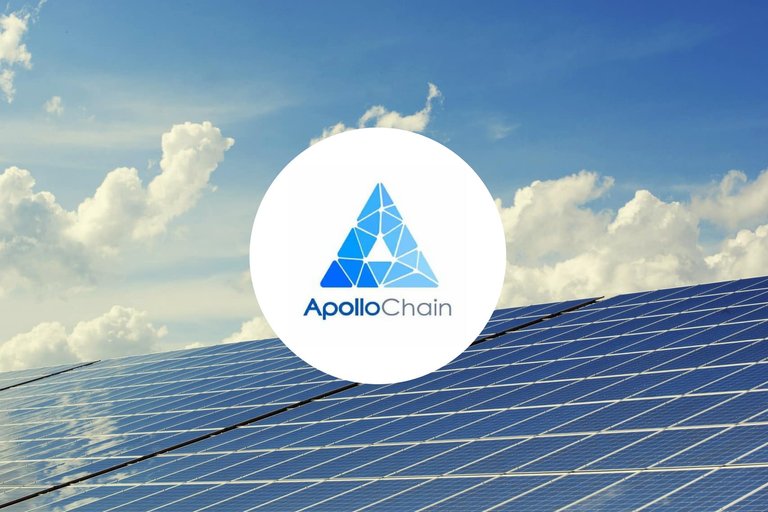
Hi Friends, It's my pleasure to share the information with you, If you are interested in joining the ApolloChain project or you are interested in joining the ApolloChain project, Now I can try to help you to get the information about their mission vision during the ApolloChain project.
SUMMARY
The power industry has enjoyed a natural monopoly since the industrial revolution with profound influence on the economy. Countries rich in coal and gas like Australia have been able to enjoy low cost thermal power. Much of the generation was built by the Government near the source of its fuel and most of Australia’s population lives on the coast. Accordingly, an expensive transmission and distribution network was established to transport power from generator to consumer. The modern market has changed. Affordable micro-generation is now available to households who can bypass large power transportation costs. The opportunity exists in Australia and other deregulated markets for prosumers of electricity to trade bilaterally. Approximately 35 nations which account for 44% of the generated power in the world have already deregulated (or made significant progress towards deregulation) in their energy markets.
Electric Power Reform
Electricity market worldwide in general has 4 operation modes:
- Monopoly
- Powerbuying
- Wholesale competition
- Retail competition.
At this moment, electricity markets in most countries are still in monopoly and power-buying mode.
The very first operation mode of the electricity market is monopoly in 2 forms: vertical integration (meaning generation, transmission, distribution and supply are all monopolised) and separating distribution.
In this mode, monopoly is partially cracked down, and individual power generator starts accessing this market, but the organisation in which has electricity wholesale dominates the power grid thereby power generators are not capable to directly sell electricity to end users.
The deregulated electricity market, allows consumers to choose who they purchase their electricity from. A deregulated market increases economic efficiencies and can benefit the entire economy through lower energy costs and appropriate pricing signals to encourage the right type of generation at the right locations.
DESIGN PHILOSOPHY OF APOLLOCHAIN
Why New Energy
Renewable generation is one of the fastest growing industries in the world. In 2016, the total installed capacity of photovoltaic (PV) power station worldwide exceeds 65GW with 32% growth, while the accumulated installed capacity is approaching 300GW with 35% increase. As two main players in the solar industry, the US solar market has 78% year-on-year capacity growth, and China identically experiences solar industry boom by reaching approximately 30GW installed capacity.
In the meantime, the solar power generating cost has a further decline due to the competition amongst equipment manufacturers: 18% reduction on global levelised cost of energy (LCOE) was realised in 2016 over 2015 and ultimately maintained at $100/MWh.
While in the solar energy filed, according to KPMG’s research, newly increased capacity of PV power station is and will be expanding with significantly 330% growth from 111.68GW in 2012 to 3695.64GW by 2040
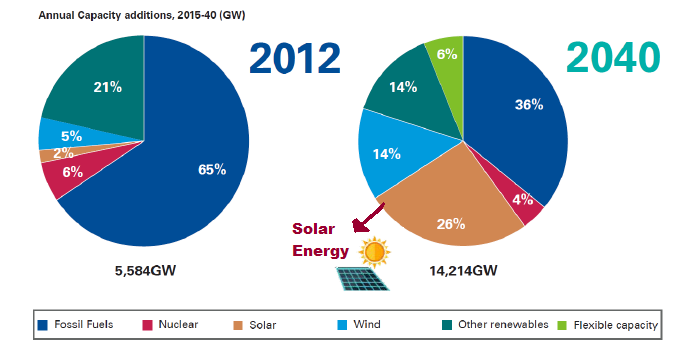
Apollochain New Energy Trading Platform
As an innovative tool, blockchain technology intrinsically matches distributed energy within a deregulated energy market. Following the progressing power reform and the growingly opened power retail market, distributed generation, as a fast developing sector, makes the demand side users possess both generator and consumer identities with deep engagement in this industrial reform.
Reveals the basic structure of Apollochain trading platform that contains transaction layer, extended layer and blockchain layer. Renewable energy system is the principle of the transaction layer, while the trading parties contain power generators, power grid, distributed power station, “smart home” (household users as well as energy generator) and other renewable energy holders. Each party initiates and terminates its energy transactions at this layer, then all the relative data is delivered to the extended layer forming smart contracts and eventually being stored in the blockchain layer
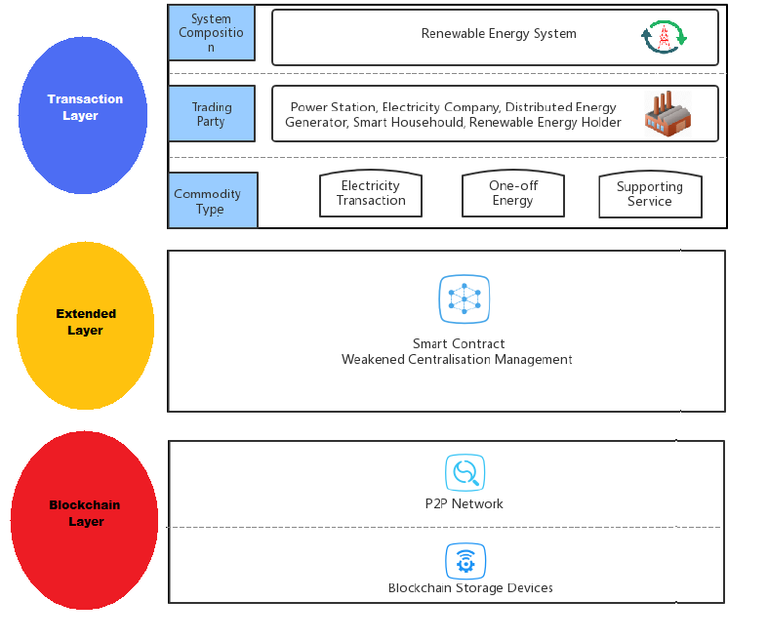
Above all, Apollochain deploys Blockchain 3.0 technology to set up its trading platform. Aiming at all the deregulated and retail-oriented energy markets all over the world, Apollochain can be rooted in those countries and regions via current connections and resources to establish fundamental users who could be generators, wholesalers, institutional or individual electricity consumers, to realise direct transactions between parties, weaken centralised trading cost, and avoid losses on government pricing. In this case, a smart grid with IoT (Internet of Things), AI (Artificial Intelligence) and Blockchain technology becomes the critical physical basis of achieving all the above targets (together “The Energy Internet”).
ApolloChain do important thing :
Electricity Real-Time Trade, Crowd-Funding, and Pre-sale
Apollochain provides real-time electricity trade through one of the three primary approaches: matchmaking trade-off, time-sharing collective trade-off, and auction
Apollochain enables electricity crowd-funding to users as well: a power station’s owner can obtain funding liquidity ahead by means of Apollochain before the construction work is done.
Apollochain also offers electricity pre-sale: a power station can sign a pre-sale contract with a specific electricity consumer and freeze corresponding electricity generated in a period of time, then directionally transmit it to the consumer in due time. Such approach enables power station collecting utility bills in advance so as to increase its funding liquidity and evade transaction loss due to electricity usage fluctuation.
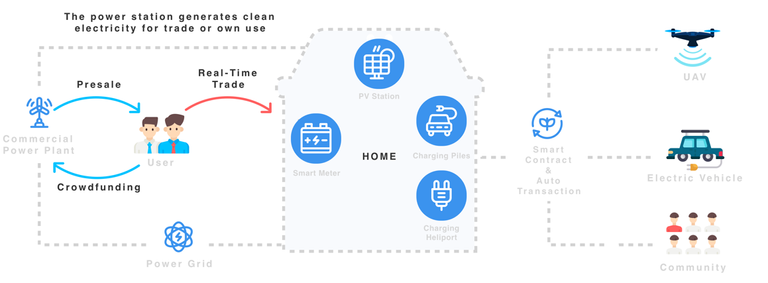
Future Development Layout
Under the support of initiatives, like Apollochain; clean energy in 2025 is expected to account for 52.13% of the energy market. East coast of the US, the entire Australia, most European countries, and Yangtze River Delta & Pearl River Delta in China, in the future are all going to replace traditional energy with clean ones, which will effectively reduce carbon emission and prevent global warming from temperature rising of 2℃.
In addition, PV generation is expected to have higher proportion in clean energy from 35.7% in 2017 to 62.5%, and individual investors in need for household PV units will sharply increase from 1.3% to 35.7%, thanks to increased performance and reducing costs of producing solar panels, development of energy storage, as well as Apollochain’s innovative power reform. Subsequently, PV power station investors can benefit from exchanging and trading their electricity surplus, but they are also going to trigger a huge market with a booming increase from energy storage, Electric Vehicles, UAV (Unmanned Aerial Vehicle) charging station, and so on.
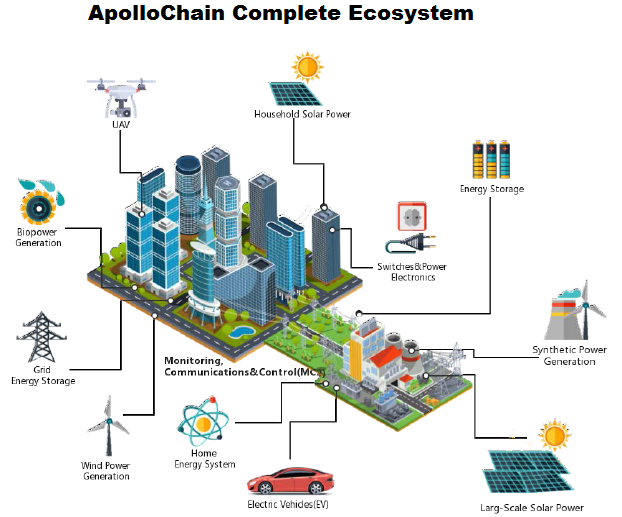
This is a video about Solar Energy who can bring benefit for the world :
TOKEN(APL)Design Philosophy
Apollochain has its own token Apollo Coin(APL)as the electronic proof of electricity transactions. Its circulation quantity has positive correlation with electricity quantity that is available for trade. Therefore, the issuance logic of APL is: once Apollochain’s power generating capacity (power station installed capacity) reaches a certain level, new APL will be putting into circulation for meeting transaction demand. In other words, APL is going to be gradually unlocked and put in circulation with the increasing installed capacity.
APL moreover has designed a mechanism to buffer and reverse its depreciation in the secondary market: in addition to trade on the Exchange, APL can also be traded on Apollochain for making electricity spot & forward transactions. When price drop on the secondary market, Apollochain’s electricity buyers will be inclined to obtain and hold APL in exchange of electricity at lower price, especially when APL’s price is even lower than the electricity price of public grid thus an evident space for arbitrage exits.
Accordingly, electricity buyers will not only raise APL’s purchase demand on the Exchange, but they will hold their APL until the best time of buying electricity, which diminishes APL’s supply in the secondary market and stables its price
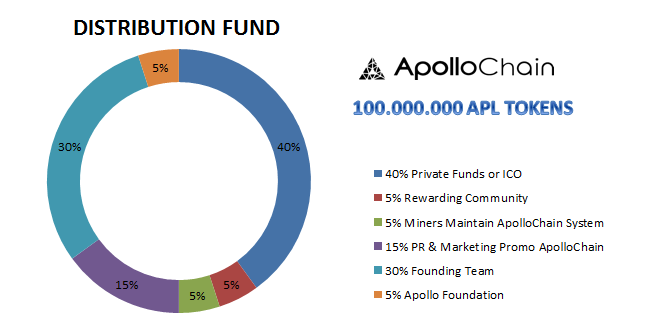
PRE-ICO [05 May, 2018 - 15 Jun, 2018]
Soft cap: $500,000 USD
Hard cap: $1,000,000 USD
ICO [01 Jul, 2018 - 1 Sep, 2018]
Soft cap: $8,000,000 USD
Hard cap: $20,000,000 USD
PROFIT MODEL
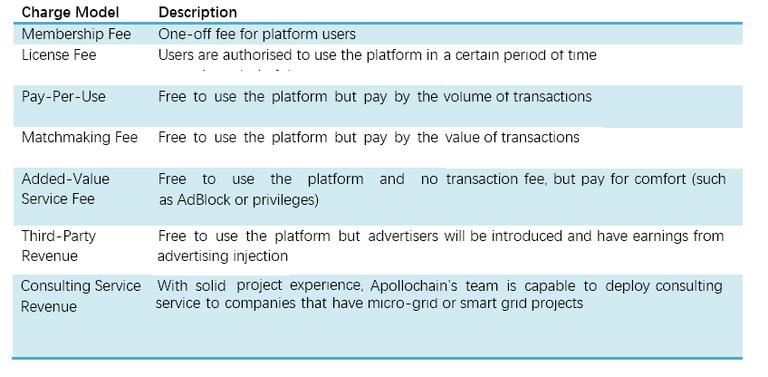
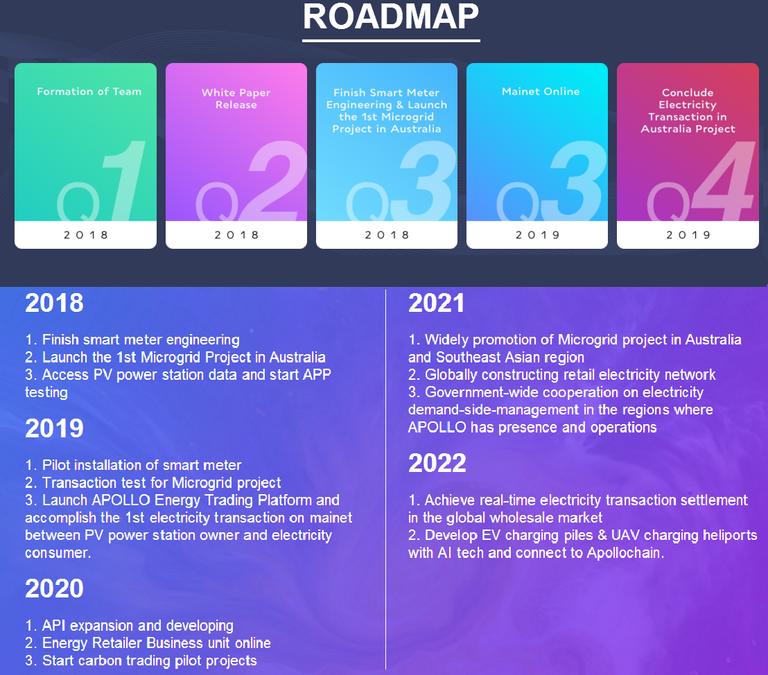
TEAM WORK

If you need more information about ApolloChain, please to visit the link as belows :
Twitter: https://twitter.com/apollochain
Facebook: https://www.facebook.com/apollochain
Medium: https://medium.com/@apollochain
Reddit: https://www.reddit.com/user/apollochain
Instagram: https://www.instagram.com/aplchain_official
Telegram: https://t.me/apollochaingroup
Whitepaper: http://www.apollochain.io/WhitePaper(Business%20Version).pdf
Website: http://www.apollochain.io
Thank you
Written by : baperstrong
My Ether Wallet : 0x205a29aF926D24512f121Ae3b36B2377c9007233Profil BTT : https://bitcointalk.org/index.php?action=profile;u=1839239
Coins mentioned in post: